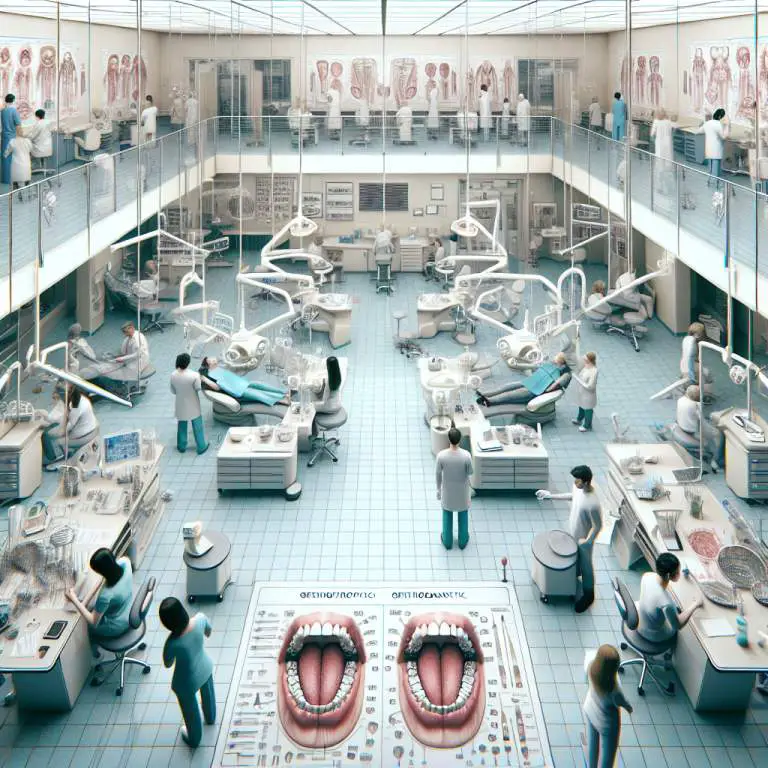How does mewing practice align with principles of physiotherapy and rehabilitation?
Mewing, a technique focusing on proper tongue posture, aligns with physiotherapy and rehabilitation principles by aiming to improve facial structure and breathing patterns. It encourages the strengthening of jaw muscles and correct alignment, which can aid in reducing symptoms related to TMJ disorders and sleep apnea. By promoting better posture and muscle function, mewing fits within the broader therapeutic practices aimed at enhancing overall physical health.

How does mewing influence facial structure and posture?
Mewing is a technique that involves placing your tongue against the roof of your mouth. This position is supposed to help with the way your face looks and how you hold yourself up. People who try mewing believe it can make their jawlines sharper and their faces more attractive.
Not only does mewing focus on the face, but it also aims to improve posture. When you press your tongue up, it encourages you to straighten your neck and back. This can lead to better overall posture, making you look taller and more confident.
What are the foundational principles of physiotherapy and rehabilitation in relation to facial muscles?
Physiotherapy for the face, also known as facial rehabilitation, is all about exercises that make your facial muscles stronger and more flexible. These exercises can help people who have had injuries or surgeries that affect their face. They’re designed to improve movement and reduce pain.
The main idea behind this kind of therapy is that by working out these muscles, you can help fix problems like difficulty smiling or closing your eyes fully. It’s like taking your face to the gym! By doing these exercises regularly, people can see big improvements in how their face moves and feels.
Can mewing be considered a form of physiotherapy for the face?
Mewing could be seen as a type of physiotherapy for the face because it involves exercising facial muscles in a specific way. Just like traditional physiotherapy helps strengthen muscles after an injury, mewing aims to strengthen and tone the muscles around the jaw and mouth.
This technique encourages better alignment of the teeth and jaws while potentially improving breathing patterns too. So, in a way, practicing mewing could offer some benefits similar to those gained from targeted facial exercises prescribed by professionals.
What evidence supports the effectiveness of mewing in improving facial structure?
There’s quite a bit of discussion online about how effective mewing really is. Some people share before-and-after photos showing changes in their jawline or overall facial structure after practicing mewing for several months or even years.
However, scientific studies on mewing are limited. Most evidence comes from personal testimonials rather than controlled research studies. This means while there are many stories of success with mewing, we still need more research to understand its full effects scientifically.
< td>Musculoskeletal health, mobility improvement td >< td > Adjunctive; Can be part of a broader rehabilitation plan including mewing for comprehensive postural correction. td > tr >
< td > Myofunctional Therapy td >< td > A type of therapy that focuses on the oral and facial muscles to improve breathing, bite functions, and correct poor oral habits. td >< td > Oral and facial muscle function, breathing efficiency td >< td > Directly related; Mewing is often considered a component or form of myofunctional therapy with shared goals. td > tr > < td > Yoga/Pilates td >< td > Disciplines that combine physical exercises, mental meditation, and breathing techniques to strengthen the body and relieve stress. < / t d >< t d > Body strength , flexibility , mind-body connection < / t d >< t d > Complementary ; While not directly related , they promote awareness and control over body posture , potentially benefiting those practicing mewing . < / t d > tr >< / table > figure >
How does mewing compare with traditional methods of physiotherapy for facial issues?
Mewing is a technique that involves positioning the tongue against the roof of the mouth to potentially improve facial structure. This method contrasts with traditional physiotherapy, which often includes exercises targeting specific muscles, manual therapy, and sometimes the use of equipment to address facial issues. Traditional physiotherapy is tailored to individual needs and is based on extensive research and clinical trials.
While mewing focuses on the placement of the tongue and claims to offer benefits such as a more defined jawline, traditional physiotherapy might address a broader range of facial problems including TMJ disorders, facial paralysis, and post-surgical rehabilitation. The scientific community recognizes traditional methods for their proven effectiveness in treating specific conditions, whereas mewing lacks substantial clinical evidence supporting its efficacy.
What are the potential risks or downsides of practicing mewing incorrectly?
Practicing mewing incorrectly can lead to several potential risks or downsides. One significant concern is the development of improper swallowing habits. If not done correctly, mewing could alter how one swallows, leading to difficulties or discomfort during eating. Additionally, incorrect tongue posture over an extended period might contribute to misalignment or undue pressure on certain teeth.
Another risk involves exacerbating existing temporomandibular joint (TMJ) issues or creating new ones due to improper jaw positioning. Since mewing practices are not universally standardized and lack professional oversight, there’s a higher chance for individuals to practice these techniques wrongly. This underscores the importance of seeking advice from healthcare professionals before attempting any self-administered therapy like mewing.
Are there professional healthcare opinions on the practice of mewing?
The professional healthcare community holds varied opinions regarding the practice of mewing. Some dentists and orthodontists acknowledge that proper tongue posture can play a role in oral health and potentially influence facial aesthetics over time. However, they also caution that more research is needed to fully understand its impacts and effectiveness as compared to established treatments.
On the other hand, many healthcare professionals remain skeptical about the broad claims made by proponents of mewing. They emphasize that while maintaining good posture—including that of the tongue—is beneficial, it’s unlikely to produce dramatic changes in adult facial structure without surgical intervention. These professionals advocate for evidence-based approaches when addressing facial issues or concerns about physical appearance.
Final Thoughts
Mewing presents an interesting concept in terms of influencing one’s facial structure through non-invasive means. While it offers an alternative approach compared with traditional physiotherapy methods for addressing certain facial issues, it’s essential to approach it with caution due to the lack of comprehensive scientific backing and potential risks associated with incorrect practice.
Ultimately, anyone considering mewing as a technique for improving their facial aesthetics should consult with healthcare professionals first. This ensures they’re making informed decisions based on their unique health profiles and receiving guidance that aligns with established medical practices and evidence-based treatments.
| Therapeutic Practice | Description | Primary Focus | Relation to Mewing |
|---|---|---|---|
| Mewing | A technique involving the proper placement of the tongue against the roof of the mouth, encouraging facial and dental structure alignment. | Facial structure, breathing, dental alignment | N/A |
| Orthodontics | The branch of dentistry that corrects teeth and jaws that are positioned improperly. | Dental alignment, jaw correction | Complementary; Mewing can support orthodontic goals by promoting better oral posture. |
| Osteopathy | A type of alternative medicine that emphasizes physical manipulation of muscle tissue and bones. | Body alignment, pain relief | Supportive; Techniques may enhance overall postural health, complementing mewing’s focus on facial posture. |
| Craniosacral Therapy | A form of bodywork using therapeutic touch to manipulate the synarthrodial joints of the cranium. | Cranial balance, stress relief | Indirectly related; While focusing on cranial health, it shares mewing’s holistic approach to structural integrity. |
| Physical Therapy | A branch of rehabilitative health that uses specially designed exercises and equipment to help patients regain or improve their physical abilities. | ||







